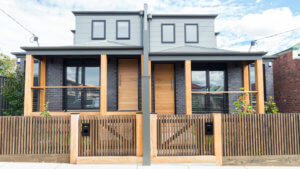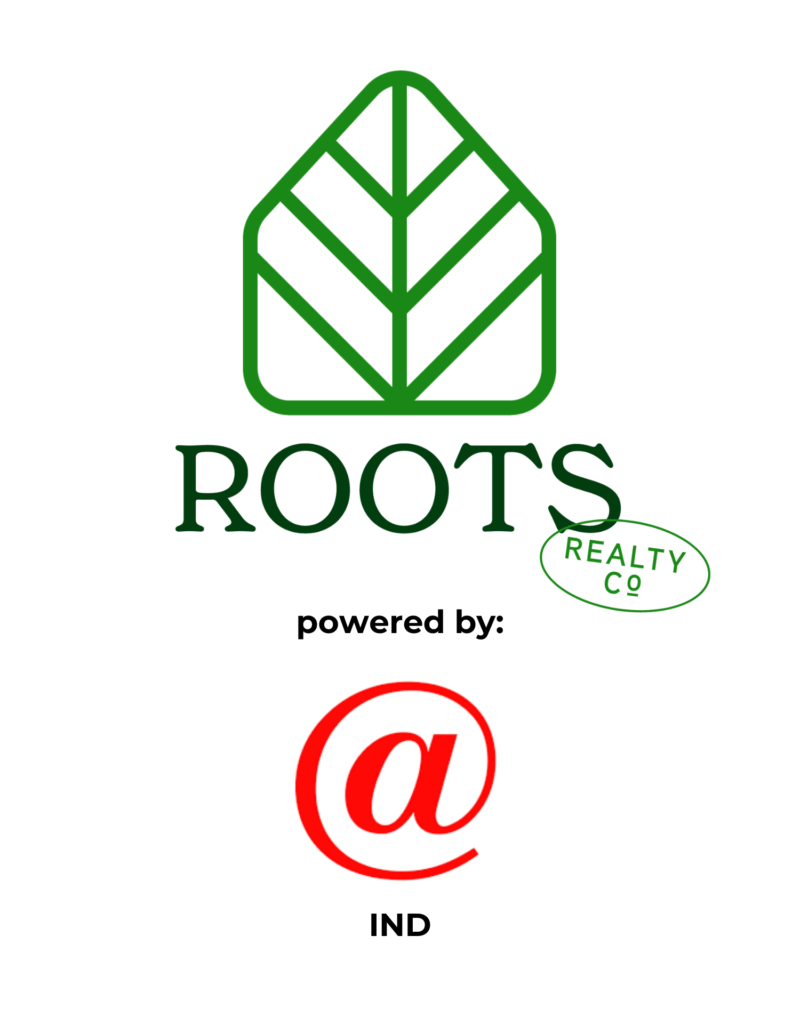
My first rental (Quadplex) on the near eastside of Indianapolis. 29 N Tacoma
Step by Step Guide to Buying Your First Rental
According to IRS data, just 6.7% of the population reported owning a rental property in 2018. If you’re like me, you want to be in this privileged group. Owning a rental enables you to build wealth through three mechanisms: 1) Equity paydown, 2) Cash flow, and 3) Appreciation. A solid rental property will have a Return-on-Investment above 20%, about 10% higher than the S&P 500’s returns in the long run. We know owning a rental property is a good move, but how do you do it as a first timer?
Step 1: Commit to Learning
This may seem simplistic but it’s not. Once I read my first real estate book, “The Book on Rental Property Investing” by Brandon Turner, I started to identify as an investor. Learning, listening to podcasts like BiggerPockets or Rental Income Podcast, reading books, shapes your mind and helps you get over the first hump – a lack of knowledge.
Step 2: Determine Your High-Level Strategy
The main strategies to decide upon are, will you:
- Use a partner to ease the financial load?
- Buy distressed properties, fix them up, rent them out, and refinance? (BRRRR)
- Invest in your backyard or out-of-state?
- Buy in A / B class neighborhoods (lower returns, safer) or C / D class (higher returns, more risky)?
- Look for properties on the market or off-market?
Important: Stick to one main strategy at the beginning. The shiny object syndrome is real and keeps people from ever gaining mastery in one lane. I suggest going with the “low hanging fruit.” AKA do something attainable first because the first property likely won’t be a homeroom. It will be a learning experience to launch you into further investments.
Step 3: Build a Budget
Unless you are financing the property through cash or a “hard money / fix and flip” loan, you will need an investment property loan. These loans are typically a minimum of 20% down, but the better terms are available with 25% down.
A lot of investors I work with want to buy a super cheap property at the beginning. This is fine, but keep in mind that the cheaper the property, the more likely you’ll carry higher costs maintaining it and dealing with worse tenants generally.
My suggestion: In a place like Indianapolis you can find a great rental property around these price points: 150-250k for a Single Family Rental, and 180-300k for a Duplex. You can get into higher unit counts but that carries a higher price tag of course.
Step 3: Know How to Configure Rent Rates
What to look for: Ideally, a property around the Rule of 1%. This means that a property with a purchase price of $150,000 would rent out for $1500 / month. In my market, Indianapolis, this is still attainable with either C class neighborhoods or distressed properties.
Next, go get a subscription to Rentometer.com. With this website, you can get rental comps that give you a great idea for the general range of the rent rate on a property.
I like to use a website like Trulia or Zillow to see what other properties are asking for in rents. This can be a great way to see what the going rent rates are in a particular neighborhood.
Step 4: Get a Team Together
In Real Estate, investors speak of your “Team.”
A good team will have these members:
- Investor: You
- Agent: Should be familiar with investment properties and preferably an investor themselves. Use the BiggerPockets Find an Agent tool if you need! Or, if you’re looking in Indy, you can use me. A good agent is indispensable for your first deal. They will help you know what to look for and avert you from possible dangers. They are essentially free to use as a buyer too…
- Property Manager: You’ll want a property manager to help you with analyzing your properties too. You should interview property managers and ask about their costs but also services they provide. This is a crucial decision!
- Lender: I would personally just ask your Real Estate Agent or Property Manager for their lender contacts. Ask them specifically who they use for loans on investment properties. You don’t technically have to commit to a lender until you go under contract.
- Contractors: You’ll need a Handyman and a good GC. Again, you can rely on your Property Manager or Real Estate Agent, but it doesn’t hurt to do your own networking.
- Mentors / Guides: Before I buy a property, I always make sure to present the listing and my own notes / spreadsheet calculations to at least 3 mentors for their take. This has been critical for avoiding mistakes early on!
- For inspectors, title company, and other contacts I would rely on a well-networked Real Estate Agent.
Step 5: Factor in Expected Expenses
You’ll have to know typical costs for various items an owner carries. Here’s some typical figures as it relates to Indianapolis:
- Debt Service: Your mortgage payment will be your largest expense. You can easily find out what this will be by searching “Mortgage Amortization Calculator” on Google.
- Utilities: In general, tenants pay utilities in Indianapolis. Sometimes owner is responsible for water / sewer. It just depends.
- Homeowner’s Insurance: I find that a very rough rule of thumb is that you can expect your annual policy to cost about 0.5% of the purchase price. Again, this is very rough and you should do your own research.
- Taxes: In Indianapolis, property taxes usually amount to between 2-2.5% of purchase price. Sometimes it can be much lower. It just depends on the county assessor. You can find tax assessments for Indianapolis here.
- Capital Expenditures / Maintenance: I usually factor in 15% of the rent amount per month to be set aside to repairs & maintenance. Keep in mind things like HVAC systems typically cost above $4,000 and roofs are typically $8000-12000. These have a life expectancy around 15-25 years. Cash reserves are extremely important.
- Management: A property manager will usually charge around 10% of the rents / month. Oftentimes, there will be a leasing fee equal to the first month’s rent. You can always self-manage but don’t forget to account for the value of your time.
- Random expenses like lawn mowing, snow removal, landscaping, appliances, etc. In Indianapolis, usually tenants are responsible for a lot of these items.
- Vacancy: Remember there will be months in between tenants with no rent coming in. I typically factor in a loss of 4-6% of the rents for vacancy.
*Typically, rental property investors are looking to calculate things on a month-to-month basis.
Step 6: Calculate Cash Flow
The most crucial part of analyzing a potential rental property is plugging in the numbers to a calculator / spreadsheet. Here’s the spreadsheet I like to use -> LINK. BiggerPockets.com also has a great Rental Property Calculator. You may have to pay for a membership to the website. This will be money well spent if you leverage the tools and connections!
EXAMPLE:
You find a Duplex priced at $185,000. The rents are $1100 per side.
Gross rents = $2200 / month
Let’s say after adding up all your expenses you incur above you find that your expenses are $1850 / month.
That means you’ll be cash flowing $350 / month. ($2200 – $1850)
The main metric investors use is Cash-on-Cash ROI. That means your ROI on the cash invested in this deal.
Let’s say you invested 25% for a downpayment and 2% in closing costs. This would be about $49,000 total initial cash investment.
FORMULA FOR CASH ON CASH ROI:
CASH FLOW ANNUAL ($4200) / CASH INVESTED ($49,000)
For this property that equals 8.5%. This is a pretty solid return. In this market I find that anything over 5% is a pretty great cash on cash return.
Step 7: Search for properties
For beginners, I would suggest looking on the market. Buying a home on the market (MLS) means you get some added layers of risk mitigation: an agent representing you and an inspection period.
For more advanced investors, I do suggest looking on the MLS and off-market. Here are my favorite sources of off market properties:
- Networking with landlords with large portfolios
- Working with a real estate broker that knows a lot of investors
- Joining investor Facebook groups (Indianapolis has many)
- Joining Wholesaler email lists (again, Indianapolis has many)
- Contacting the owner’s of rental properties via Zillow or skip-tracing
Step 8: Put an Offer In
Once you’ve analyzed the above, it’s time to put an offer in. You need to study up on the market to understand how much leverage you have. Month’s inventory of homes is a good indicator of if you are in a Buyer’s Market, a Seller’s Market, or a Neutral Market. Another good metric is Median Days on Market. If Median Days on Market is below 30 that means it’s a pretty fast moving market.
Early on, ask your Agent typical terms and contingencies they are seeing accepted in the marketplace. Right now, we are transitioning into a Buyer’s Market in Indianapolis. Thus, I’m seeing more offers accepted under ask and with unique terms like “Seller paid credits”.
Important: If you’re using a loan you will need Pre-Approved by a lender before you can put offers in.
Step 9: Go Under Contract
Once you get your offer accepted you’ll be in the “Pending” or “Under Contract” time period. Typically this is around 30-45 days long.
It’s pretty easy to know what to do during this time. Just listen closely to what your Lender and Agent ask for!
The main hurdles in this time period are the Inspection and the Appraisal.
I always try to schedule a consultation with the home inspector for help putting items in perspective. I like to construct a “Seller To Do”, “Handyman / Me To Do”, and “Monitor” list of items that come up on the report. The seller will not repair everything wrong with the property, but hopefully they will take care of some majors! Most of the time, unless the home was sold “As Is”, you can get the seller to repair some of the defects or at least give you some credits for repairs.
The Appraisal is completed by the bank. Ideally the value comes in at or above the price you are under contract for. If it is less, then typically you’ll have to negotiate with the seller…
FYI: A Home Inspection is typically $300-600, and an Appraisal is typically $500-700. These are considered part of closing costs.
Step 10: Close on the Property!
Closing on a property isn’t hard! You’ll have to wire the funds that the title company says you owe 48-24 hours or so before you sign. Then, you’ll go to the title company and sign the papers!
Make sure you are aware when the tax bill is due, and if this is “escrowed” (paid by the lender) or if you will have to pay it out of pocket.
Step 11: Ongoing Management
It is crucial to have solid management systems in place. Here are some best practices to keep in mind:
- Keep great records of rents, expenses, etc. Most of the time a good property manager does this for you. This is critical when it comes time to pay taxes, and when you sell.
- My recommendation is to hire a good CPA to help with your taxes. You want to take the full advantage of owning a rental and make sure all your expenses are reflected.
- Set aside about $10,000-15,000 in cash reserves / property. Remember, that you’re on the hook for large, unexpected expenses like a new furnace or a new roof.
- Set aside money each month for maintenance / repairs. I suggest a minimum of $100-200 per unit.
- Budget to “turn” the property during vacancies. You want to keep in mind that updating the property is part of helping it produce the best rents and get the best tenants!
- Prepare for your next one. It is my suggestion to consider a 1031, tax-deferred, exchange. This allows you to defer any capital gains with your next purchase.

About the author:
Tyler Lingle is an active Realtor in the Indianapolis metro area. He is also a real estate investor, specializing in rentals and short-term rentals. Tyler helped his clients sell over $17 million in transaction volume this past year!
tyler@tylerlingle.com
317-443-5258


